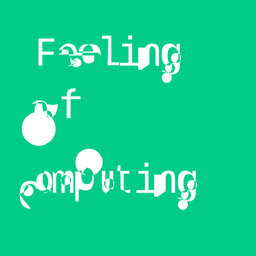Feeling of Computing
A romp through the field of computer programming, grapling with our history and wondering what should come next. A mix of deeply technical talk, philo…If you're anything like Ivan (oof, sorry), you've heard of Pygmalion but never caught more than the gist. Some sort of project from the early 70s, similar to Sketchpad or Smalltalk or something, yet another promising prototype from the early history of our field that failed to take the world by storm. Our stock-in-trade on this show.
But you've probably heard of Programming by Demonstration. And you've certainly heard of icons — you know, those little pictures that have become indelibly part of computing as we know it. Pygmalion is the originator of these concepts… and more!
The best introduction to Pygmalion is Mariano Guerra's No-code History: Pygmalion, which includes a clearly articulated summary of the big ideas, motivation, and design, with a video demonstration of the programming interface, key terminology, and links.
The most introduction to Pygmalion — or Pig Million, The Millionth Pig, as it'll surely come to be known — is the subject of today's episode: the original paper by David Canfield Smith.
Links
$ We don't run ads on this show anymore. Sometimes Ivan makes a fake ad for a nonsense product like CarrotGrid or Hest, but those don't pay for the dirt & vapor we grow them in. But what if they could?
-
Gonna just get this one out of the way: Quotation — and I quote, "A crucial semantic distinction between direct and indirect speech is that direct speech purports to report the exact words that were said or written EXACTLY AS THEY WERE SAID OR WRITTEN, LU, whereas indirect speech is a representation of speech in one's own words WHICH IS ALSO TOTALLY FINE, BUT JUST BE COOL ABOUT IT HEY?"
-
Shout out to Brian Hempel who sent us (among other treats) this concise summary of Pig Million from the seminal book Watch What I Do: Programming by Demonstration.
-
Recent FoC Patreon bonus episodes were about the game Baba is You and, on our first ever video episode, the design of a visual representation for machine code.
-
Lenna, a sexist test image that was and to some extent still is widely used in computer graphics.
-
Lu: Biscuit
-
Jimmy: Biscuit
-
Ivan: Limp Bizkit
-
Aaron Sloman's INTERACTIONS BETWEEN PHILOSOPHY AND ARTIFICIAL INTELLIGENCE: The Role of Intuition and Non-Logical Reasoning in Intelligence
-
Ivan: Platonism
-
Jimmy: Neoplatonism
-
Lu: Neuplatonism
-
I would never Derrida
-
Lu: Conlang
-
Ivan: Conlon Nancarrow, beloved (by Ivan, at least) composer of music for the Player Piano. Here's a baby-faced Adam Neely with the scoop if you're new to Nancarrow. Welcome.
-
Jimmy: Conway Twitty
-
For the video demonstrating the programming model, check Mariano's post
-
Lu's project CellPond, and their SPLASH talk
-
Marcel Goethals makes a lot of cool weird stuff and is a choice follow.
Why does it say "Put all the metal back in the ground" at the bottom of the show notes?
Music featured in this episode:
- Various old stuff by Ivan. The music for StageCast Creator is called Between Two Tigers.
- Conlon Nancarrow's Study No. 47
- Wagner, the new Witness haunting every episode.
! Send us email, share your ideas in the Slack, and catch us at these normal places:
See you in the future!
 Feeling of Computing
Feeling of Computing


